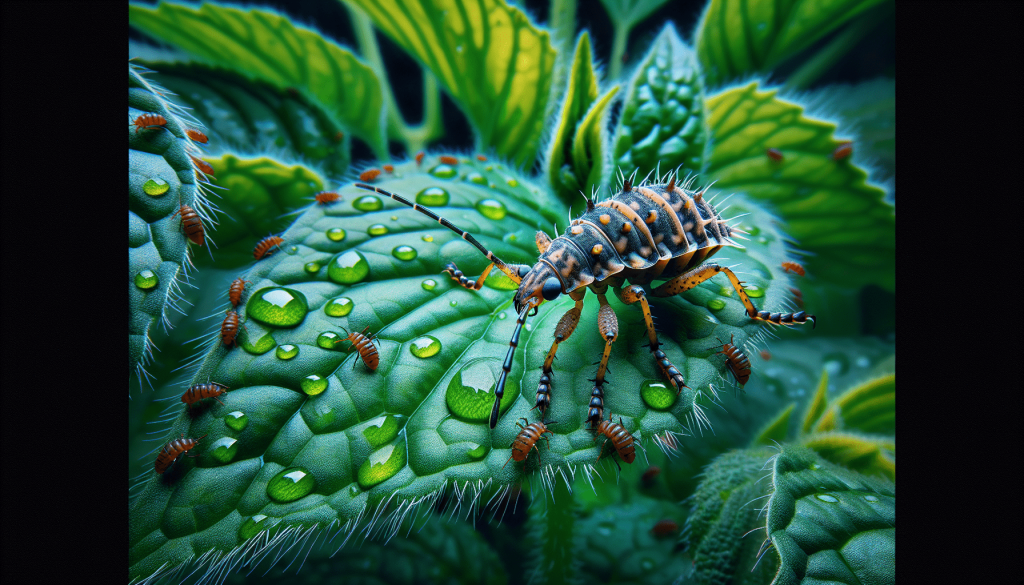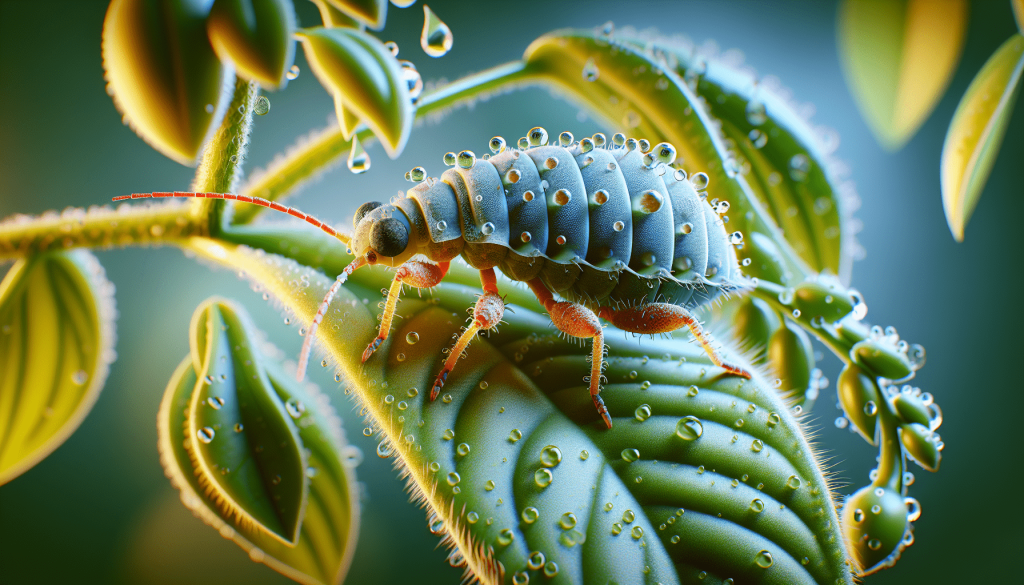This post may contain affiliate links. As an Amazon Associate, we may earn commissions from qualifying purchases.
In your beautiful garden, there are times when unwelcome visitors like aphids or Japanese beetles make an appearance, threatening the health of your beloved plants. Understanding the lifecycle of these pests is crucial for managing them effectively. Aphids, for instance, can reproduce rapidly and create colonies that siphon sap from your plants, leading to weakened growth and potential disease transmission. Japanese beetles, on the other hand, often appear in large numbers and can cause significant damage by skeletonizing leaves. Employing Integrated Pest Management (IPM) strategies like monitoring, cultural practices, biological control, and safe use of chemical controls can help you manage these pests sustainably. Through regular garden inspections, promoting beneficial insects, and using environmentally friendly control methods, you can protect your garden while minimizing harm to the ecosystem. Have you ever walked out to your garden with high hopes of finding flourishing flowers, only to be greeted by unsightly damage on your favorite plants? Discovering pests in your garden can be frustrating, but with some knowledge and a little effort, you can keep these troubles at bay. Today, we’ll be delving into the lifecycle and management of one such common garden pest: the aphid. We’ll explore integrated pest management (IPM) strategies to help keep your garden healthy and vibrant.

Understanding the Aphid Lifecycle and Behavior
Before diving into management strategies, it’s essential to understand the pest you are dealing with. Aphids are small, pear-shaped insects that can be yellow, green, black, brown, or red. They are often found in clusters on the undersides of leaves or stems.
Aphid Lifecycle
Understanding the lifecycle of aphids can help you disrupt their growth and minimize their impact on your garden. Here’s a closer look:
- Egg Stage: Aphids lay eggs that can overwinter in protected locations, such as on tree bark or in leaf litter.
- Nymph Stage: These eggs hatch into nymphs in spring. Nymphs are essentially smaller, wingless versions of adult aphids and begin feeding immediately on plant sap.
- Adult Stage: Nymphs molt several times before reaching adulthood. Once they become adults, aphids give birth to live young without needing to mate, allowing for rapid population growth.
Behavioral Characteristics
- Feeding: Aphids use their piercing-sucking mouthparts to extract sap from plants. This feeding process weakens plants, causes curling and yellowing of leaves, and can transmit plant viruses.
- Reproduction: A single aphid can give birth to dozens of offspring within a week, leading to exponential population growth.
- Defense Mechanisms: Some aphids secrete a sticky substance called honeydew, which attracts ants. These ants then protect aphids from natural predators.
Understanding these characteristics can help you implement targeted control measures.
Identifying Aphid Infestations
Timely identification is crucial in managing aphid infestations effectively. Here are some signs to look out for:
- Stunted Plant Growth: Aphids feeding on plant sap can stunt plant growth.
- Distorted Leaves: Leaves may appear curled, yellow, or deformed.
- Presence of Ants: Ants farming honeydew-secreting aphids is another telltale sign.
- Sticky Residue: The honeydew secreted by aphids leaves a sticky residue on leaves and promotes the growth of sooty mold.
If you notice any of these signs, you are likely dealing with an aphid infestation.
Integrated Pest Management (IPM) Strategies
IPM is a holistic approach that uses a combination of strategies to manage pests sustainably. It minimizes the use of chemical pesticides, protecting both the environment and beneficial organisms. Here are some effective IPM strategies for aphid control.
Cultural Controls
These are practices to prevent pests from becoming established.
- Crop Rotation: Rotate your crops yearly to disrupt the aphid lifecycle and reduce host plants.
- Select Resistant Varieties: Choose plants that are less susceptible to aphid infestations.
- Healthy Plants: Keep your plants healthy with proper watering, fertilization, and pruning. Healthy plants are more resistant to pests.
Mechanical Controls
These strategies involve physically removing pests or creating barriers.
- Water Spray: Use a strong water spray to dislodge aphids from plants. Repeat as necessary.
- Hand Removal: If the infestation is localized, you can remove aphids by hand or with a damp cloth.
- Sticky Traps: Place yellow sticky traps near susceptible plants to capture flying aphids.
Biological Controls
These methods use natural predators, parasites, or pathogens to control pests.
Predators
Several natural predators can help keep aphid populations in check. Here are a few:
| Predator | Description |
|---|---|
| Lady beetles (Ladybugs) | Both adults and larvae feed on aphids. |
| Green lacewings | Their larvae, known as aphid lions, consume aphids. |
| Parasitic wasps | Lay eggs inside aphids, killing them when larvae emerge |
Encouraging these natural predators by planting diverse and native vegetation can reduce aphid numbers effectively.
Pathogens
Pathogens like fungi and bacteria can also be effective against aphids.
- Beauveria bassiana: This fungal pathogen is available commercially and can help reduce aphid populations.
Chemical Controls
As a last resort, chemical controls can be used. However, they should be applied cautiously:
- Insecticidal Soaps: Effective against aphids, these soaps must come in direct contact with the pests.
- Neem Oil: Derived from the neem tree, this oil disrupts the life cycle of aphids.
- Horticultural Oils: These oils suffocate aphids and other soft-bodied insects.
Always follow the manufacturer’s instructions, and be mindful of the potential impacts on beneficial insects.
Combining IPM Strategies
Combining multiple IPM strategies enhances effectiveness and sustainability. Here’s an example approach:
- Monitor and Identify: Regularly inspect your garden for signs of aphids.
- Cultural Practices: Rotate crops and choose resistant plant varieties.
- Mechanical Controls: Use water sprays and sticky traps as a non-invasive first step.
- Biological Controls: Introduce and encourage natural predators.
- Chemical Controls: If infestations persist, use chemical solutions sparingly and as a last resort.
Conclusion
Managing garden pests like aphids can seem daunting, but employing an integrated pest management strategy can make it manageable and sustainable. By understanding the lifecycle of aphids and using a combination of cultural, mechanical, biological, and chemical controls, you can keep your garden thriving while minimizing the harmful effects of pesticides.
Do you have any personal experiences or additional tips for managing aphid infestations? Feel free to share your thoughts below. Happy gardening!









